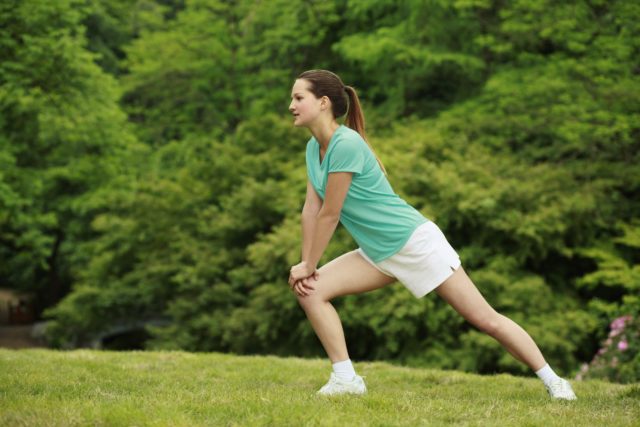Exercising Outdoors Isn’t Really That Bad…
Exercising outdoors? in the UK? you must be mad! Well maybe so but gyms and leisure centres have been shut for months, and no-one likes that. Unfortunately, my studio also falls under the category of ‘indoor space’, so the best way for me to train clients in the foreseeable future is using the outdoor space of my studio.
It might seem like an initially unattractive idea. Rain? Cold? Wind? It’s a bit of a wildcard since any of these things could technically happen. Realistically though, training outdoors brings many benefits that indoor training doesn’t.
Exercising outdoors can Boost Self Esteem
Firstly, people who exercise will likely have noticed the spike in self-esteem and confidence a workout can provide. According to a 2010 study, exercising outdoors can actually boost self-esteem.1 The study defines ‘green exercise’ as exercise in the presence of nature. It attempted to investigate its effects on self-esteem and mood, both indicators of mental health.
It found that every type of green environment provided boosts in self-esteem and mood, with areas near water having a particularly enhanced effect. The study concluded that the environment is important for mental health, and that mental health can be improved by participating in outdoor exercise.
Vitamin D
Another important benefit to training outside is the fact that you’ll be likely training in the sunlight. When we’re in the sunlight, the production of vitamin D in our body is increased. A 2015 paper showed that there is likely to be a link between vitamin D levels and mental health.2 Specifically, it showed that lower levels of depressive symptoms (might sound extreme, but bear in mind that mental health is a spectrum rather than discrete) were linked to higher levels of vitamin D. Lack of vitamin D is also a fundamental idea behind seasonal affective disorder (SAD).
Vitamin D also has other important roles within the body: it can cut your chance of developing multiple sclerosis, heart disease, and the flu. One study actually showed that in people with low calcium intake, vitamin D could actually help fat loss.3
Keep it Interesting
Finally, there’s the simple matter of keeping things interesting. Sometimes it can be frustrating visiting a gym and seeing the same grey walls and shining mirrors every time you go. A big reason why people quit or take a break from working out is simply due to boredom. Switching up the environment in which you exercise can be a crucial step towards ensuring your workouts remain interesting, varied, and invigorating.
Gyms are full of equipment which enables us to isolate particular muscles extremely well, but can often be dull, colourless environments with a bland and un-energetic atmosphere. On the other hand, training outside with green grass and the blue sky can provide an effective change-up.
It’s also worth considering that in terms of actual exercise, it’s more than possible to have as good a workout outside using weights at home or bodyweight as you’d have at the gym. Complex equipment is great, but it’s often beneficial to go back to more basic movements or bodyweight movements such as squats or pull-ups to target important muscle groups.
So while quarantine has us resigned to at-home or in-the-garden workouts, it’s definitely worth considering that a lack of gyms certainly isn’t the be-all and end-all of exercise. It’s easier than most people think to have a good session at home, or, particularly, outside.
References
1 What is the Best Dose of Nature and Green Exercise for Improving Mental Health? A Multi-Study Analysis, Barton and Pretty, 2010.
2 Associations Between Vitamin D Levels and Depressive Symptoms in Healthy Young Adult Women, Kerr et al., 2015.
3 Calcium plus vitamin D supplementation and fat mass loss in female very low-calcium consumers: potential link with a calcium-specific appetite control, Major et al., 2009.

Rachel Law is a personal fitness trainer based in New Malden, Surrey. Qualifications: ActivIQ Level 3 Personal Training; Burrell Education Pregnancy Exercise Prescription; Burrell Education Advanced Pregnancy Wellness Practitioner; Burrell Education Advanced Post Natal Exercise Prescription; Burrell Education 3rd Age Women Optimal Health and Nutrition; Burrell Education Peri Natal Athlete; Burrell Education Pelvic Flow and Freedom; Olympic Weight Lifting; Premier Global Kettlebells; FIE Level Assessment and Mentoring


